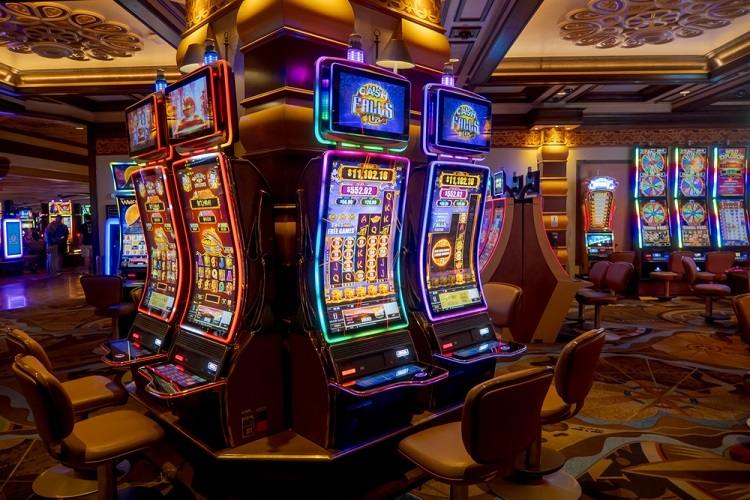Slot machines have long been a cornerstone of casino gaming, attracting millions of players with their vibrant graphics, engaging sounds, and the tantalizing promise of a big win. However, for both casual players and those in the gaming industry, understanding the mechanisms behind slot machines can unveil a whole new layer of strategy and insight. One key aspect of this understanding is reel mapping. By leveraging reel mapping insights, operators can fine-tune slot odds, while players can make more informed decisions about their gameplay.
What Is Reel Mapping?
Reel mapping refers to the internal configuration of a slot machine’s reels. This configuration determines how symbols are arranged and how frequently certain outcomes occur. While physical slot machines once relied on the direct placement of symbols on mechanical reels, modern video slots use computer algorithms to simulate these reels. Reel mapping involves the creation of a virtual reel that overlays the physical or digital display to dictate game outcomes.
Virtual Reels vs. Physical Reels
In traditional slot machines, the physical reels had a limited number of stops, which directly corresponded to the visible symbols. Modern slots, however, use virtual reels to vastly expand the possibilities. A virtual reel can have hundreds or even thousands of stops, allowing for a much broader range of potential combinations.
Key Differences:
- Physical Reels: Limited by the number of symbols that can physically fit.
- Virtual Reels: Offer nearly unlimited configurations, enabling more complex payouts and probabilities.
How Reel Mapping Affects Slot Odds
Understanding how reel mapping works is crucial for improving slot odds, whether you are a casino operator seeking to enhance profitability or a player aiming to maximize your chances of winning.
Weighted Symbols
One of the most significant ways reel mapping impacts odds is through weighted symbols. On a virtual reel, certain symbols may appear more frequently than others. For example, high-paying jackpot symbols might be assigned fewer virtual stops, making them less likely to appear, while lower-paying symbols are given more frequent stops.
Example:
Imagine a virtual reel with 100 stops:
- Jackpot symbol: 1 stop
- Medium-paying symbols: 20 stops
- Low-paying symbols: 79 stops
In this case, the probability of landing the jackpot symbol is just 1%, while lower-paying symbols dominate the outcomes.
Near Misses
Reel mapping also creates the phenomenon of “near misses.” These occur when a high-value symbol appears just above or below the payline, giving the illusion of almost winning. Near misses are a psychological tool that can encourage players to keep spinning, even though the odds haven’t changed.
Hit Frequency
Hit frequency refers to how often a slot machine delivers a winning combination. Reel mapping allows developers to control this frequency by adjusting the placement and weighting of symbols. Slots with higher hit frequencies offer more frequent, smaller wins, while lower hit frequency machines promise larger payouts but less often.
Using Reel Mapping Insights for Slot Design
For slot developers and casino operators, reel mapping is a powerful tool for crafting engaging and profitable games. By carefully analyzing reel mapping insights, you can strike the perfect balance between player satisfaction and revenue generation.
Optimizing Player Retention
Players are more likely to continue playing a slot machine that provides a mix of small wins and the occasional larger payout. Reel mapping can be adjusted to ensure that players feel rewarded without compromising the casino’s profitability.
Steps to Optimize:
- Analyze historical gameplay data to understand player behavior.
- Adjust virtual reel configurations to enhance the frequency of small wins.
- Introduce engaging bonus features that align with reel mapping strategies.
Enhancing Bonus Rounds
Bonus rounds are a significant draw for many players. Reel mapping insights can be used to design bonus features that are both exciting and profitable. For example, the placement of special bonus symbols can be optimized to trigger these rounds at strategic intervals, keeping players engaged.
Leveraging Reel Mapping as a Player
While players cannot alter a slot machine’s reel mapping, understanding how it works can inform smarter gameplay choices. Here are some strategies:
Choose High RTP Slots
Return-to-Player (RTP) percentage is a crucial metric for players. Slots with higher RTP values are more likely to return a larger portion of wagers over time. By studying reel mapping, developers can design high-RTP slots that still maintain profitability, and players can focus on these machines for better odds.
Observe Hit Frequencies
Pay attention to the hit frequency of a machine. If you prefer frequent, smaller wins, look for machines with higher hit frequencies. Conversely, if you’re chasing a jackpot, you might choose a machine with a lower hit frequency but higher potential payouts.
Take Advantage of Bonuses
Look for slots with generous bonus rounds and free spin features. While these are often designed with specific reel mapping configurations, they can offer opportunities for bigger payouts.
Bonus Tip: Always check the game’s paytable and rules before you start. The paytable often provides valuable insights into the weighting of symbols and the likelihood of triggering bonus rounds.
Case Studies: Successful Use of Reel Mapping
Example 1: Increasing Engagement
A casino operator noticed that a particular slot machine was underperforming in terms of player engagement. By analyzing the reel mapping, they discovered that the hit frequency was too low, leading to player frustration. Adjustments were made to the virtual reels, increasing the frequency of small wins while maintaining the same overall RTP. As a result, player retention improved significantly.
Example 2: Balancing Jackpots
A slot developer wanted to create a machine with a progressive jackpot that felt attainable but still rare enough to maintain profitability. By assigning fewer virtual stops to the jackpot symbol and increasing the stops for medium-paying symbols, they struck a balance that kept players spinning while preserving the jackpot’s appeal.
Challenges and Ethical Considerations
While reel mapping offers immense flexibility and opportunity, it also presents challenges:
Transparency
Players often don’t fully understand how reel mapping works, which can lead to misconceptions about a machine’s fairness. Casinos and developers must strive for transparency to build trust.
Regulation Compliance
In many jurisdictions, gaming authorities have strict regulations regarding reel mapping and slot odds. Developers must ensure their configurations comply with these laws to avoid penalties.
Future Trends in Reel Mapping
As technology continues to evolve, reel mapping is becoming increasingly sophisticated. Machine learning and artificial intelligence are being integrated into the design process, allowing for real-time adjustments based on player behavior. These advancements promise to make slot gaming more engaging and dynamic than ever before.


